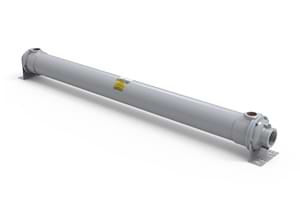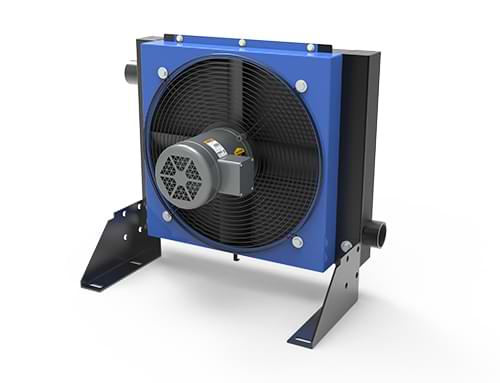Aftercoolers for Instrument Air Compressors
Unlike regular compressed air, instrument air is meticulously filtered, dried, and regulated to ensure it is free from contaminants like moisture, oil, and particulates. This high-quality air is critical for the reliable operation of sensitive equipment in industries such as oil and gas, chemical manufacturing, and power generation. The production of instrument air typically involves an air compressor, filters, dryers, and often an aftercooler, each playing a vital role in delivering clean, dry air at the required pressure.
Applications
- Critical Moisture Control: Aftercoolers tackle moisture in instrument air systems post-compression. Cooling hot air condenses water vapor for easy removal, preventing corrosion and equipment damage. Without them, moisture overwhelms dryers, compromising air quality. They’re essential for delivering dry, reliable air to sensitive pneumatic systems.
- Energy Efficiency: Aftercoolers enhance efficiency in instrument air production by cooling hot compressed air. This denser air reduces energy demands on dryers and compressors, cutting costs and wear. For precise pneumatic controls, aftercoolers optimize performance and sustainability, making them a smart system investment.
- Equipment Lifespan: Aftercoolers protect instrument air equipment by removing moisture early. This prevents rust, wear, and blockages in pneumatic valves and instruments, avoiding repairs and downtime. Ensuring dry, clean air, they extend the life of critical components, proving vital for reliable industrial operations.
Water Cooled Aftercoolers
Compressor Cooling
- Fixed or Removable Tube Bundles
- Material Options Available
- Standard and Custom Options

Air Cooled Aftercoolers
Compressor Cooling
- Use Ambient Air to Cool
- Variety of Motor Options
- Standard Pressures of Up To 250 psi

More About Instrument Air
The process begins with ambient air being drawn into a compressor, where it is pressurized. This compression generates heat, raising the air temperature significantly—sometimes to over 200°F (93°C)—and increases its moisture-carrying capacity. If this hot, moist air is sent directly into the system, it can lead to corrosion, equipment malfunction, or freezing in cold environments once the air cools downstream. This is where aftercoolers become essential. An aftercooler is a heat exchanger that cools the compressed air immediately after it exits the compressor, reducing its temperature and causing moisture to condense out of the air stream.
Here’s why aftercoolers are critical in the instrument air process:
- Moisture Removal: By cooling the air, aftercoolers allow water vapor to condense into liquid form, which can then be removed via a separator or drain. This step is foundational to preventing downstream corrosion and damage.
- Equipment Protection: Sensitive pneumatic instruments and valves require dry air to function correctly. Excess moisture can lead to rust, wear, or blockages, shortening equipment lifespan.
- Efficiency Boost: Cooler air is denser, allowing compressors and dryers to operate more efficiently, reducing energy costs and wear on the system.
- Pre-Dryer Preparation: Aftercoolers lighten the load on air dryers by removing a significant portion of moisture upfront, enhancing the drying process.
After the aftercooler stage, the air typically passes through additional filters and dryers (e.g., desiccant or refrigerated dryers) to meet stringent quality standards, such as those set by the International Society of Automation (ISA). The result is instrument air that is clean, dry, and reliable—essential for precision control and safety in industrial operations. Without aftercoolers, the entire system would be at risk, underscoring their indispensable role in the process.


